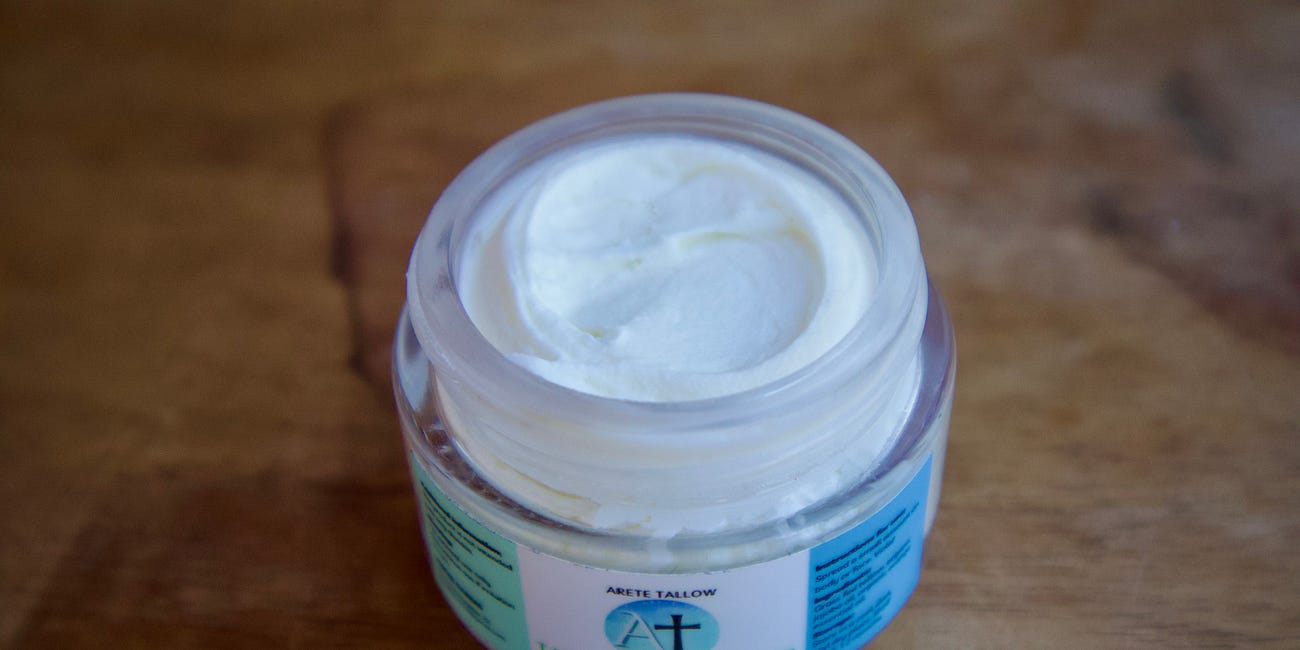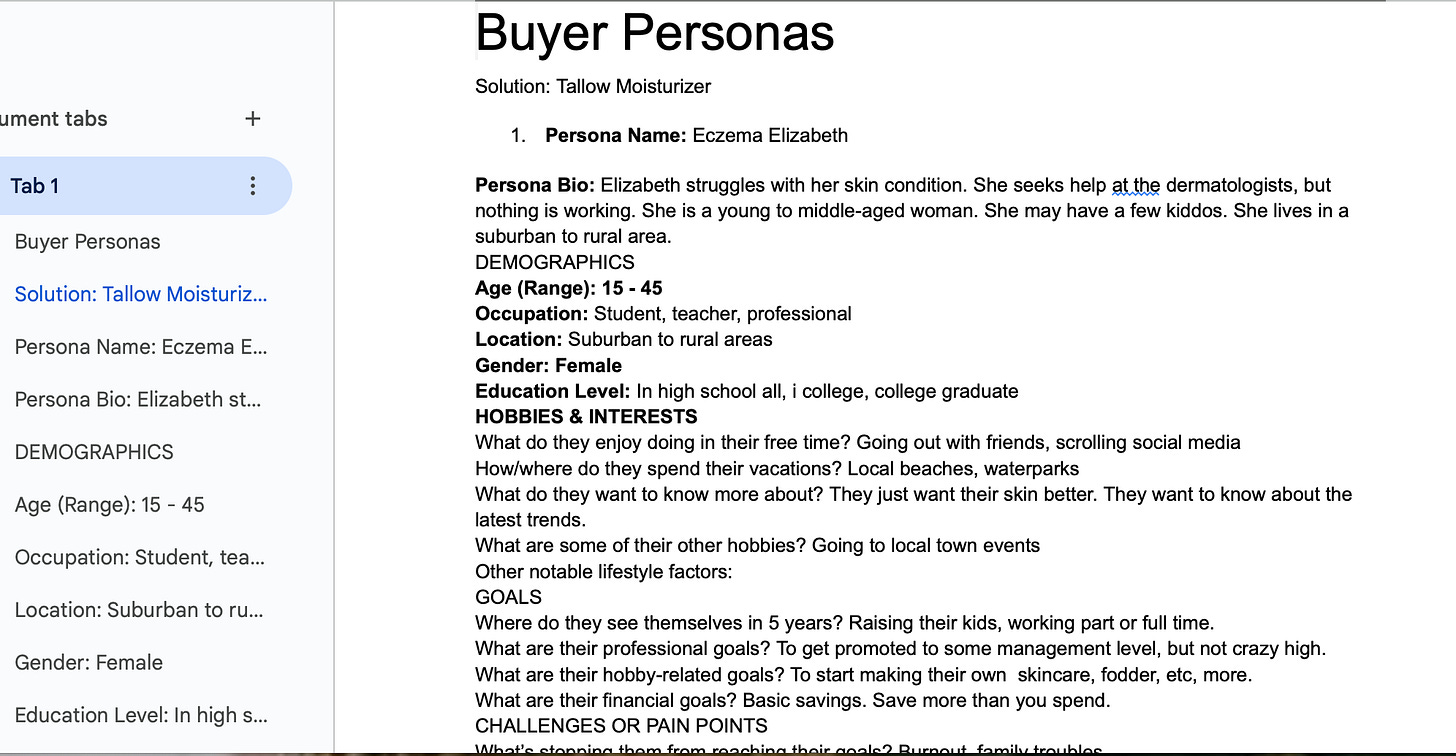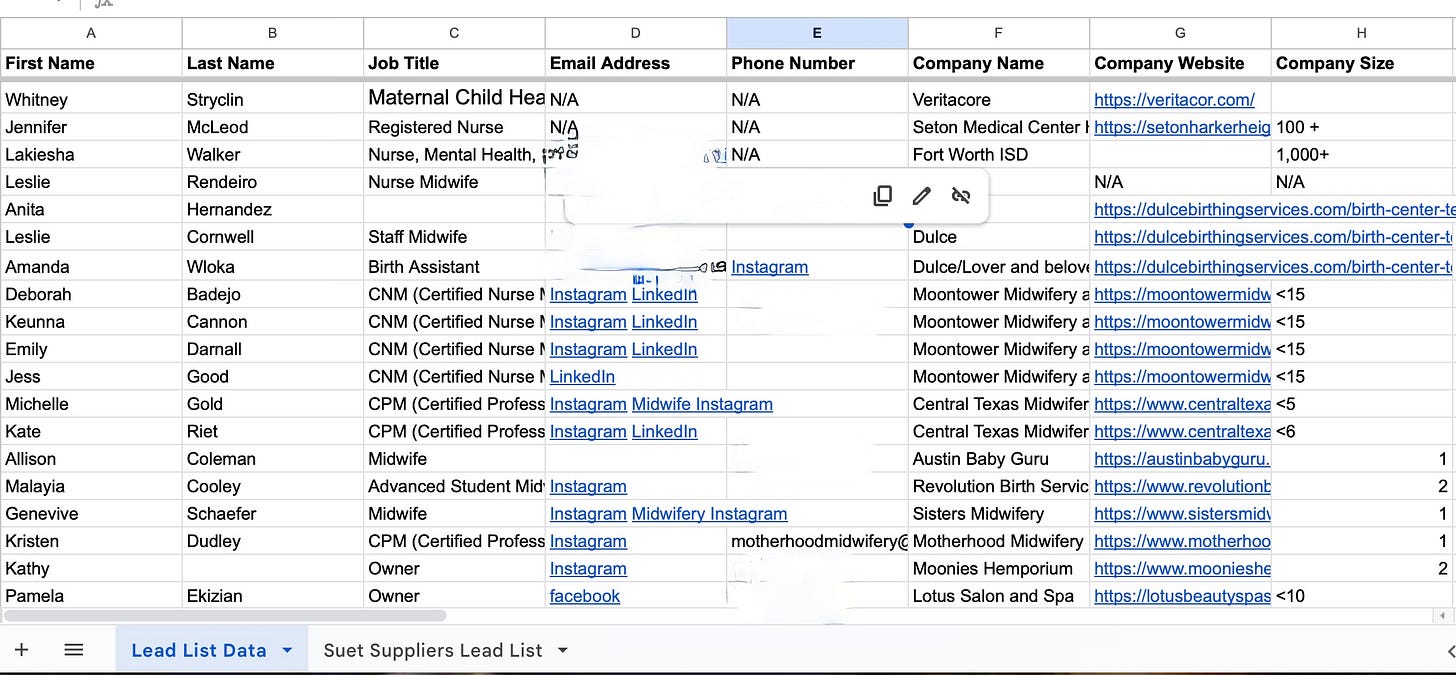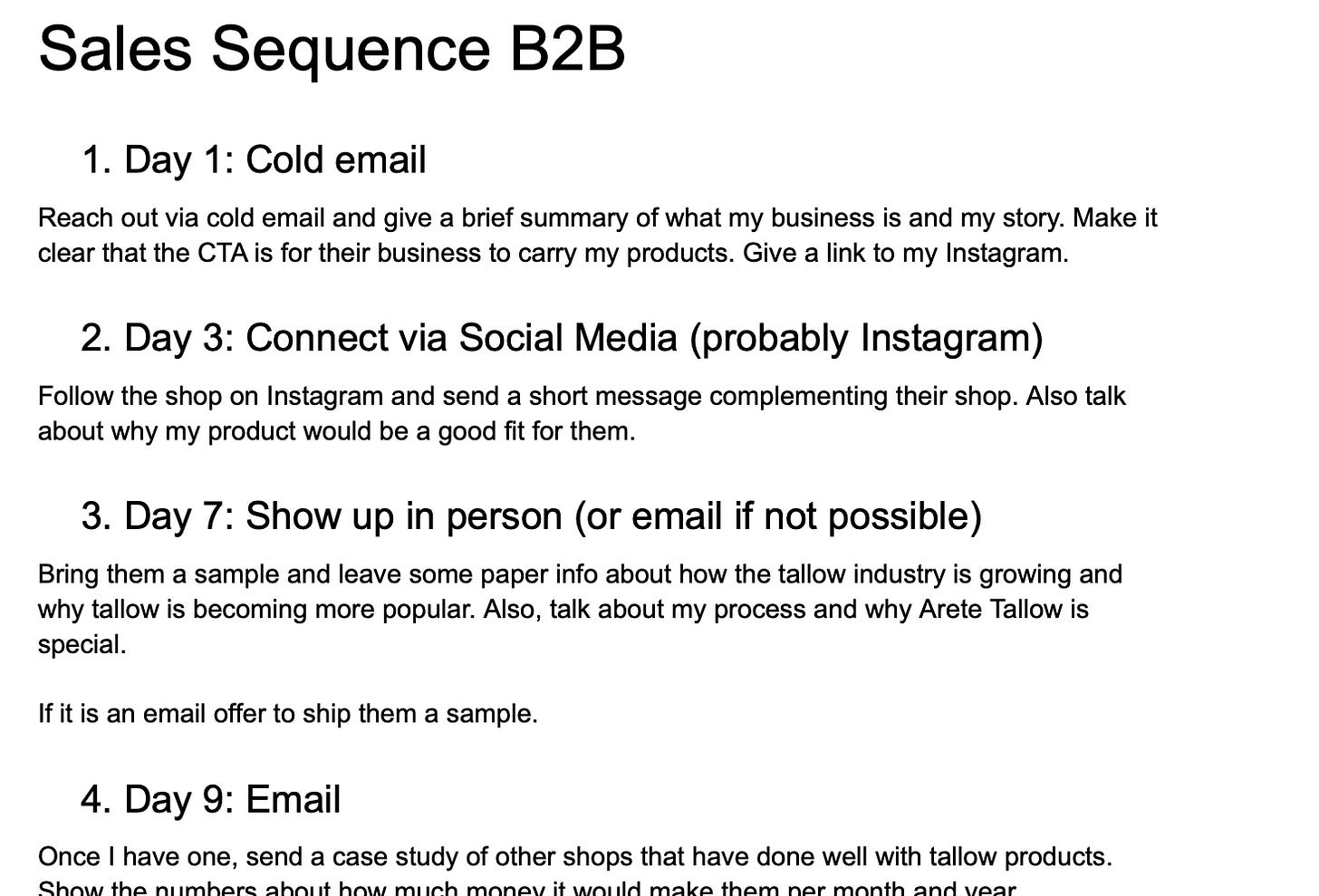What I Learned in 30 Days of Sales (And How My Perspective Shifted)
This post outlines what I learned and did during 30 days of sales. Bonus: learn how my perspective on sales changed.
30 Days of Sales
This past month, I dove into the world of sales.
A few of the things I did this month were:
comparing good and bad sales experiences
writing out a personally experienced buyer’s journey
thinking through real world problems and finding solutions
writing out buyers personas
building a lead list
creating a buyers journey
There was much that I learned from each exercise (plus a few surprising insights). Bonus: During this month my perspective on sales changed from thinking of it with a small cringe to admiring it. Read on to find out why! ↓
Let’s dive in!
Good Versus Bad Sales Experience
One of the best ways to understand what makes a good sales experience versus a bad one is to look at your personal experiences.
In this blog post, I walked through two sales experiences I had and reverse engineered them to find out what made them tick. One of the biggest finds I made was that for the bad experience there was an expectation versus reality gap. I did not receive the service that had been advertised and that I expected.
As for the good experience, my expectations were met and then exceeded.
Wondering what the actual experiences were? Take a look at the blog post!
Reverse Engineering My Buyer’s Journey
This was another project I did that had me learn from personal experience. (Funny how much we can learn from just taking a step back and doing some thinking, right?)
Anyways, in this blog post, I took a good buyer’s journey that I had experienced and reverse engineered it to find out what made it good.
“Well, what made it tick?” you ask.
Read on → The most important aspect for my buyer’s journey is that the company I was buying from clearly demonstrated how they had the right solution for my problem. If I had been confused about their product, I would have gone elsewhere.
Because they clearly and concisely showed their product and its qualities, I chose them.
Check out the blog post! ↓
Sales Solves Problems
In this thought exercise I took real world problems and then came up with solutions.
I especially liked this exercise because I believe it gets to the essence of sales: to connect problems with solutions. I thought of 5 real world problems and then brainstormed to find solutions. (Call me Einstein :)
The beauty of this exercise though was that solutions to many of our problems are a few moments of intentional thinking away.
Want to know what the problems and solutions were? Check out the blog post here! (Fair warning: Knowing me, you may hear about tallow!)
Uncovering Buyer Personas
In this exercise I wrote out several buyer personas.
Something that struck me in this exercise was that I needed to diversify my customer outreach. When I saw my different buyer personas, I realized that each of them needed to be reached in unique ways. A teenager who is interested in buying tallow needs to be reached by different means than her grandma who wants something to help with her wrinkles.
Next up, building a lead list for my customers personas. ↓
Building a Lead List
This was the most detail-oriented exercise.
In this exercise, I built a lead list for my business Areté Tallow. One thing that surprised me was how many buyer personas I had. To simplify things, I chose to focus on two. I did my best to find all types of contact information that I could (name, email, phone number, social media, location, etc).
At the end I had created a 20 person lead list of potential customers!
Want to see how I did it in detail? Check out the blog post!
Creating a Buyers Journey
Ok, now I had a lead list, but what was I going to do with it?
That is where creating a buyer’s journey came in. I designed the buyer’s journey for retailers who could carry my tallow products. I had previously communicated with potential customers in this field, but without much luck. Creating the buyer’s journey opened my eyes to the amount of contact needed.
With this buyer’s journey in hand, I am better prepared to contact the retailers on my lead list.
Last Thoughts on Sales
As promised, here is how my perspective on sales changed over the last month:
Before I dove into the world of sales, I had a stereotypical view of sales. If you said “sales,” I said “pushy.” Sound familiar? I believed that sales was all about getting products off the shelves. Now that I have taken a closer look at sales, I know that that is not true.
Well, it may be true of bad sales, but not good sales.
Good sales, fully simplified, is connecting someone with a problem to the solution. I think that is noble! Buyer personas, lead lists, buyer’s journeys, etc. are all ways that help sales people effectively reach people who have problems (which means all of us).
I believe sales is about helping people.
Why is sales so hard?
I have been able to experience firsthand how difficult sales can be.
Many times the person with a problem is being offered solutions by many others as well. Other times they may not be able to articulate what their problem is or even be aware of it. The job of a sales person is to efficiently and persuasively demonstrate how his solution is needed by the customer, but with all of the above mentioned issues, that can be difficult.
Sales also takes an emotional toll.
With all of the obstacles, “no’s” and rejections are bound to come. The hard part is pushing through the rejects to find the “yeses.” The most important thing to keep in mind is that the rejects are not personal. They are merely giving you information about who your ideal customer is or how your communication methods need to be improved.
Conclusion
These past 30 days of sales have been eye opening.
From perspective shifts, to gaining technical skills, I am so glad I took the time to dive into sales. I believe it is one of the most beneficial skills a person can have, no matter their stage or station in life. I also believe it is important to stay focused on the real goal of sales—helping others.
Thank you for reading—and here’s to sales done well,
Serena Atkinson







